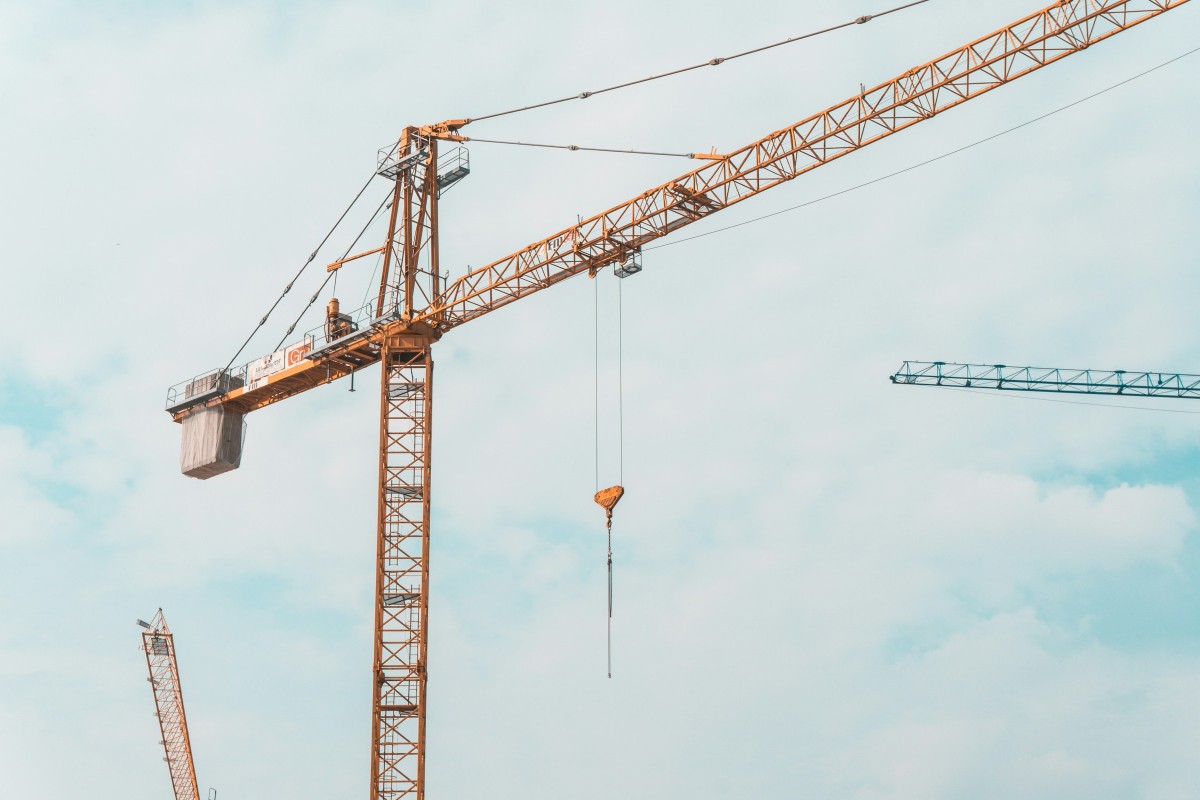
2024 is already in full swing and real estate market experts are outlining their forecasts for the development of real estate in the coming months, starting with the events of 2023. Macroeconomic and in particular interest rate developments led to a decline in transactions in the year just ended, but the signs are moderately positive for the various real estate sectors for 2024, albeit with due caution. Here is what the experts are predicting for the real estate market in Italy in 2024 and which sectors to watch out for.
Residential property market in Italy
According to the Tecnocasa research office, 2023 closed, for the residential property market in Italy, with a contraction in purchases and sales compared to the previous year. We are talking about 680 thousand transactions, which could fall further to 650 thousand by 2024, with prices that could rise by up to 2 per cent. These are, however, numbers that testify to a healthy market: "Interest rates, which are still high and for which an improvement is forecast for 2024, together with the prudence of banks, are elements that make access to credit still difficult, especially for those who need to resort to major financing," explains Fabiana Megliola, Head of the Tecnocasa Group Studies Office. - This could lead to a reduction in prices, particularly for the more popular types and larger sizes.
Smaller sizes that do not require significant capital are not expected to undergo major reductions. We do not expect any negative impact on the top, stately types and on those newly built, in excellent condition and efficient, for which people are also prepared to spend a little more.

House prices will be affected, according to Megliola, by the difficulty or otherwise of finding an adequate supply of product. "New construction will be more likely to take place in large cities while it could slow down in the hinterland and in provincial capitals where construction costs are too high to guarantee good market absorption. Values are also expected to fall for renovation solutions requiring significant work. In realities where there is still a lack of supply, prices will hold, despite the decrease in availability of expenditure, especially in large cities.
The scenario could change the investment choices in residential real estate, especially with regard to rental income. "Investments will remain an important component of the market both in the short and long-term rental mode but, in the latter case, with a greater focus on the solvency of the tenant who may be asked for more guarantees," says Megliola. - In fact, there are many who are shifting to short-term rental. Forecasts are also good for tourist resorts where, despite the less intense buying drive experienced in recent years, there is still a fair amount of interest from foreign buyers. Rents will continue on the recovery path thanks to good demand. Insufficient supply, especially in light of the return of short lets, will cause rents to rise further. Of course, it will be necessary to consider the development of the economy, for which growth is still expected to be weak, the trend that inflation will take and in which direction business and consumer confidence will go.
Italian real estate investment in 2024
Broadening our gaze to large real estate investments, Savills Investment Management (Savills IM) sees several sectors in 2024 as offering lucrative opportunities that remain robust in terms of both capital protection and the generation of stable, steady income streams. Key factor: the transition to zero emissions and ESG.
Sectors to consider include:
- Residential rental: historically, at least in the local market, a business prerogative of private individuals, it nevertheless shows favourable dynamics in the fundamentals that make the sector's potential attractive to all institutional investors. The need to create a modern product that meets the wishes of users will make a decisive contribution to supporting significant volumes of new investment in the sector.
- Logistics: the rental dynamics in major logistics centres will continue in 2024. Vacancy is almost zero and the existing stock is, on the whole, relatively old; the potential for modern, efficient, sustainable and correctly located real estate is enormous.
- Real estate debt: another area to watch with interest is real estate bonds. According to Andrew Allen, Global Head of Research, Product Strategy and Development, "Real estate debt is the allocation that provides the best risk-adjusted returns today, with strong protection against under performance. In a period of uncertainty and volatility, the certainty and stability of cash flows that senior real estate lending provides is currently the most attractive type of investment for investors."
Offices in Italy

According to JLL's analysis, the office leasing market totalled around 680,000m2 of take-up in 2023, of which 426,000m2 in Milan and 250,000m2 in Rome.
For 2024, occupiers' focus on office quality and ESG compliance is confirmed, also in view of the approaching 2030 deadline on sustainability targets.
In parallel with a consolidation of hybrid working models, Italy confirms a significant rate of return to offices, particularly in Milan (85%), which is much higher than the average of the main European and US cities. In line with this trend, a rationalisation of corporate space is estimated, with an increase in subleases and the search for quality space in well-serviced and connected areas.
"In Q4 2023, the office rental market in Milan is shown to be growing compared to the previous quarter (+39%) and higher even than Q4 2022 (+10%); however, the year ends on a downward trend compared to the record levels of 2022 (-15%). Demand remains concentrated, as in previous quarters, in the historic centre area, in Porta Nuova and City Life. The limited availability of Grade A properties has supported and continues to support the level of prime rents, with a Grade A vacancy of 2.6%," comments Stefania Campagna, Head of Markets at JLL Italia. "Rome is confirmed as a market of interest, thanks also to the positive impact of the PNRR inducement, with a record 2023 registering a +70% year-on-year increase."
Luxury real estate in Italy: what to expect in 2024
The luxury property market will continue to hold in 2024. With reference to the square of Milan, according to data from the AdE, the prestige residential real estate market closed 2023 with a drop of 6.2% compared to last year and a total of 455 transactions. On the other hand, according to the estimates of the "Vincenzo Monti Prestige Prime Residential 2024", turnover generated a volume of exchanges for €861.3 million (+0.8% compared to 2022), with average prices at €12,658 per square metre; not considering the top prices, the average drops to €10,862 per square metre. Compared to 2022, the increase was 7.1% in nominal terms. The housing supply is showing some signs of increase (+1.1%).
"The slowdown in buying and selling is a phenomenon that has appeared in the last quarter of 2022 and even more so in 2023 and will be further accentuated in the first quarter of 2024," said Andrea Pincherli Vicini, Ceo & Founder of Vincenzo Monti Prestige. - These are largely predictable dynamics because we are coming from a phase of great growth post covid, in which there was a surge in purchase intentions also linked to what we experienced. Now, with the deterioration of the economic environment and with prospects for lower growth if not recession, with rising interest rates and a more selective attitude of the banks, it was logical to expect a reduction in the number of purchases and sales, which is almost physiological. These dynamics are being transferred to prices with a delay. What the impact on values will be is difficult to say.

What will be the consequences of interest rate movements?
According to analysts, interest rate pressures are expected to persist until 2024 when real estate yields will remain weak, as the adjustment of prices to rising interest rates continues and liquidity remains depressed.
Although overshooting appears close for some, occupier markets actually held in 2023 and the Prime market outlook for next year is almost stable, although downside risks prevail at least until mid- to late 2024. From 2025 onwards, once prices have adjusted sufficiently, real estate will again be able to offer attractive core returns and be competitive for capital relative to other asset classes, such as fixed income. When the correction in asset values gives way to a recovery and growth phase, the opportunity set is expected to grow. So little difficulty for core real estate 'trophy assets'. It is not just a question of access to credit,' Andrea Pincherli Vicini concludes, 'because this segment lives much less on access to credit than the 'normal' part.
The forecasts for the Prime residential market in Milan for 2024 are therefore more cautious than pessimistic. We know that the luxury market is not particularly influenced by rates because of their impact on mortgages, but rather on yields and the resulting investment decisions. This is why many investment decisions, in highly prestigious locations in Milan, have been postponed until 2024. Forecasts indicate that also in 2024, at least in the first part, transactions will, compared to the same period of the previous year, still be negative; but the drop, at the end of the year, should not exceed five percentage points. The word 'stability', on the other hand, should characterise the trend in sales prices. The year 2024 will probably see prices rise only slightly unless inflation (which is expected to return below two per cent) rears its head again.
The 2024 forecast for the construction sector in Italy
Istat data indicate, for the third quarter, a drop of 0.9 per cent for building permits, a drop that rises to 30 per cent if we consider the whole of 2022. The construction sector, says Giovanni Pelazzi, President of Argenta SOA, confirms itself as one of the most penalised by the current economic context, with further contractions expected by 2024.
"The construction sector closes 2023 with a negative dynamic, which in part is physiological," says Pelazzi, "given the extraordinary performance in the previous two years, but in part is also due to the uncertainties and changes in the definition and remodulation of tax incentives for the sector, which will continue to have negative effects in 2024. In particular, in the residential redevelopment sector, the non-placement of tax credits with third parties will lead to significant risks for the less solid companies, liquidity crises with effects on the supply chain, and the suspension of many works'.
For the managing director of Argenta SOA, "the uncertainty over the extension of the tax incentive measures that had started an important process of making the extremely energy-intensive and ageing real estate stock more efficient, has acted. The exhaustion of the boost from tax incentives and the rapid rise in rates are factors that will continue to weigh on residential construction, while the infrastructure investments envisaged by the NRP could trigger a restart in the sector, but only in the second half of 2024, according to forecasters'.
Pelazzi then analyses the outlook for the construction sector in 2024 starting from the Cresme report. "These data,' Pelazzi explains, 'are very negative: in 2024 and 2025 the maintenance activity of the residential sector will decrease robustly (from €120 billion in 2022 to an estimated €60 billion in 2026); the exceptional boost of public works will not be able to guarantee the holding of the entire market, but only mitigate its fall. In this scenario,' continues Pelazzi, 'despite the fears expressed by many forecasters, I believe that new opportunities may open up for the construction sector, thanks to a decrease in rates by the ECB, which would lighten the cost of credit for companies and families and could revive private investments'.
